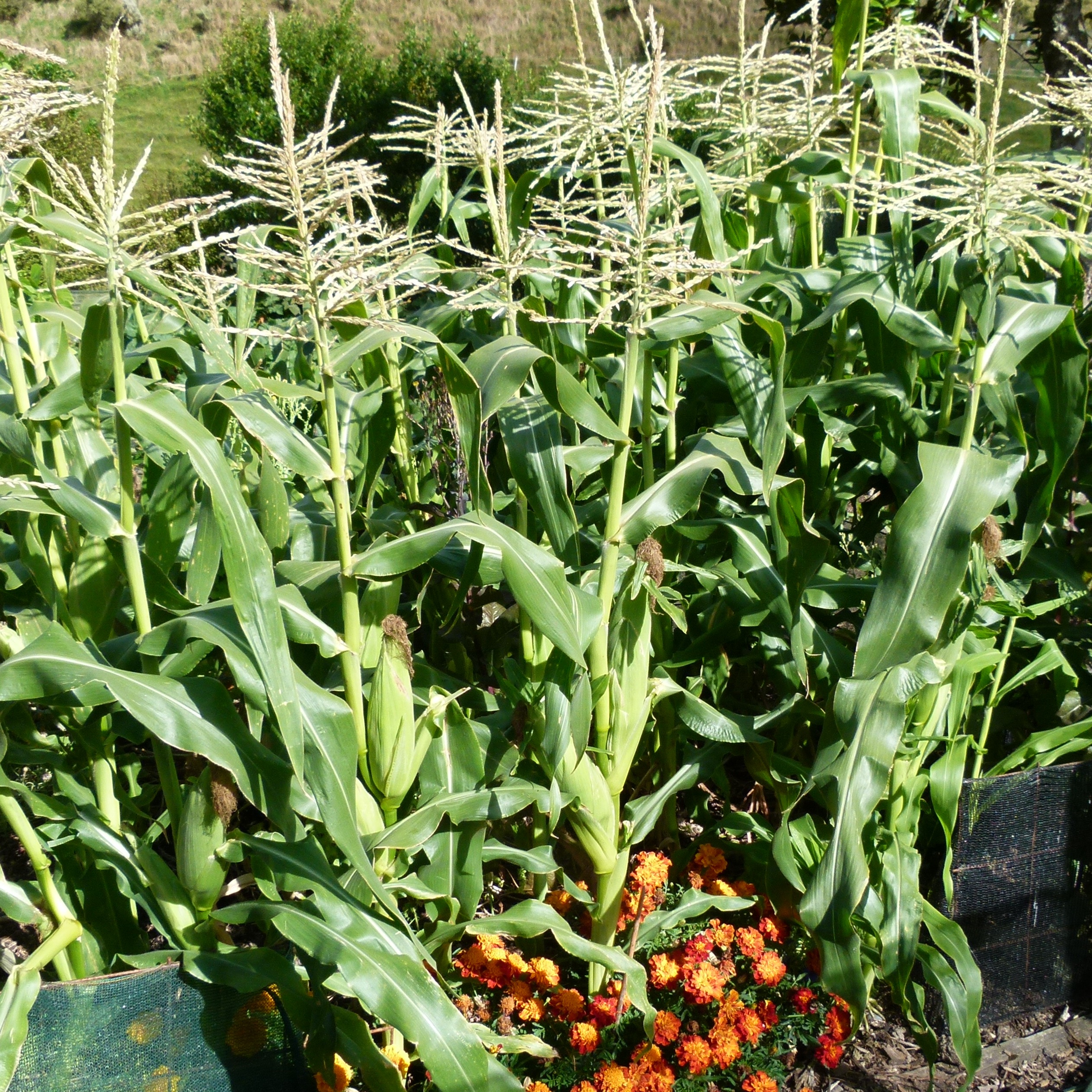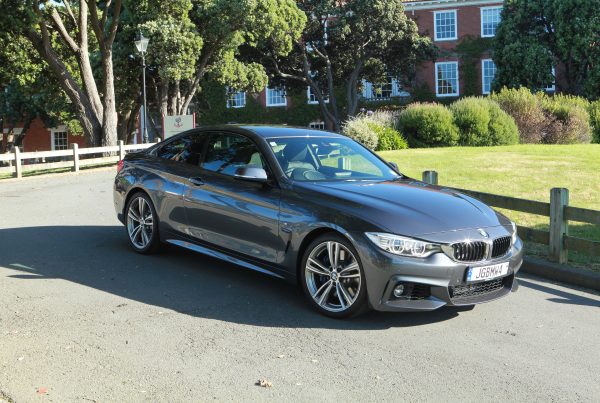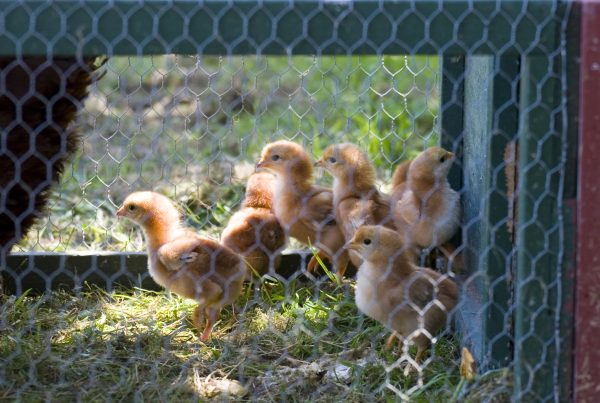
Corn is the most widely cultivated grain in the Americas, and worldwide more corn is grown by weight than any other grain, including rice and wheat. Much of the United States crop is used for producing ethanol but it’s also used for animal feed, processed into high-fructose corn syrup, and distilled into Bourbon whiskey. And don’t forget polenta, tortilla chips and buckets of cinema popcorn.
You can sow corn seeds directly in the soil, but to get ahead I tend to start mine in pots in September. Choose untreated seed, as the insecticide used to coat treated seeds may be transmitted through the corn’s pollen to honey bees flying above your crop. Corn seedlings transplant readily, and if you spread a layer of salty seaweed among them after planting, slugs and snails will stay away. The seaweed will also suppress weeds and feed the plants as it rots down.
Spacing corn plants 30 centimetres apart in both directions gives you large cobs, sometimes two per plant. Corn is wind-pollinated so you’ll need to plant a minimum of 16 plants in a block (an area 1.2 metres square) to ensure good fertilisation and full cobs. If you’re short of space, you can interplant nine spring lettuces among the corn. The salad will be nearly over by the time the corn provides too much competition.
Corn needs good soil and plenty of water once the cobs appear. With copious amounts of compost in your soil and a good layer of mulch, it’s surprising how little you may have to water, even in dry years. The plants grow tall (about 2 metres high), so provide them some shelter from the wind. I have had years when my plants have been flattened by a gale before I got to harvest my crop, despite a windbreak. But if you manage to get your corn past the slugs and pick the cobs before a storm, there aren’t many problems with which you have to contend.
Your crop is ready when the silky tassels start to dry out and turn brown. I often harvest a few petite cobs earlier than that, impatient for my fresh corn fix. Gardening, as with much of life, could be characterised as a triumph of optimism over experience. When growing corn, if your optimism pays off, the sweet, golden experience is worth it.
[info]September Gardening Recommendations
September can be a busy and testing month. The new season’s crops aren’t ready and most of last year’s are over. Spring’s here, but sometimes it’s not.
- Sow early seeds for silverbeet, salad, herbs, spring onions and root vegetables (carrot, beetroot, radish) outside.
- Sow corn, tomatoes, cucumbers, zucchini and capsicums over heat or inside.
- Plant a few potatoes.
- Go hunting for slugs and snails on damp nights with a head torch and a bucket of salty water.
- Spring clean the garden. Chop back, compost, mulch and compost some more. Did I mention the compost?




